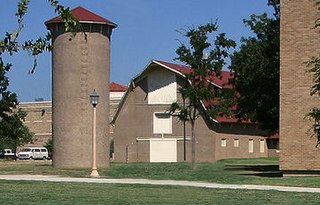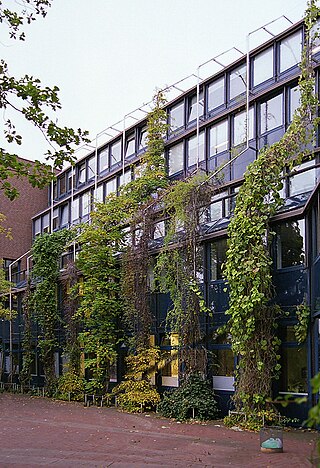
Physical education, often abbreviated to Phys. Ed. or PE, and sometimes informally referred to as gym class or simply just gym, is a subject taught in schools around the world. PE is taught during primary and secondary education and encourages psychomotor, cognitive, and effective learning through physical activity and movement exploration to promote health and physical fitness. When taught correctly and in a positive manner, children and teens can receive a storm of health benefits. These include reduced metabolic disease risk, improved cardiorespiratory fitness, and better mental health. In addition, PE classes can produce positive effects on students' behavior and academic performance. Research has shown that there is a positive correlation between brain development and exercising. Researchers in 2007 found a profound gain in English Arts standardized test scores among students who had 56 hours of physical education in a year, compared to those who had 28 hours of physical education a year.

Urban agriculture refers to various practices of cultivating, processing, and distributing food in urban areas. The term also applies to the area activities of animal husbandry, aquaculture, beekeeping, and horticulture in an urban context. Urban agriculture is distinguished from peri-urban agriculture, which takes place in rural areas at the edge of suburbs.

Helen Keller Intl is an US-based nonprofit organization that combats the causes and consequences of blindness and malnutrition by establishing programs based on evidence and research in vision, health, and nutrition. Founded in 1915 by Helen Keller and George A. Kessler, the organization's mission is to save the sight and lives of the most vulnerable and disadvantaged.

Health education is a profession of educating people about health. Areas within this profession encompass environmental health, physical health, social health, emotional health, intellectual health, and spiritual health, as well as sexual and reproductive health education.

Outdoor education is organized learning that takes place in the outdoors, typically during school camping trips. Outdoor education programs sometimes involve residential or journey wilderness-based experiences in which students participate in a variety of adventurous challenges and outdoor activities such as hiking, climbing, canoeing, ropes courses and group games. Outdoor education draws upon the philosophy, theory, and practices of experiential education and environmental education.

Agricultural education is the systematic and organized teaching, instruction and training available to students, farmers or individuals interested in the science, business and technology of agriculture as well as the management of land, environment and natural resources.

Horticultural therapy is defined by the American Horticultural Therapy Association (AHTA) as the engagement of a person in gardening and plant-based activities, facilitated by a trained therapist, to achieve specific therapeutic treatment goals. Direct contact with plants is believed to guide a person's focus away from stress enhancing their overall quality of life. The AHTA believes that horticultural therapy is an active process which occurs in the context of an established treatment plan. Horticultural therapists are specially educated and trained members of rehabilitation teams who involve the client in all phases of gardening, from propagation to selling products, as a means of bringing about improvement in their life.
Project Mercy, Inc. is a Christian, non profit organization located in Yetebon, Ethiopia, founded in 1977 by Marta Gabre-Tsadick and Deme Tekle-Wold. Over the past 18 years, Project Mercy's original mission has been expanded to include community development and self-help programs.

Urban horticulture is the science and study of the growing plants in an urban environment. It focuses on the functional use of horticulture so as to maintain and improve the surrounding urban area. Urban horticulture has seen an increase in attention with the global trend of urbanization and works to study the harvest, aesthetic, architectural, recreational and psychological purposes and effects of plants in urban environments.
Farm to School is a program in the United States through which schools buy and feature locally produced, farm-fresh foods such as dairy, fruits and vegetables, eggs, honey, meat, and beans on their menus. Schools also incorporate nutrition-based curriculum and provide students with experiential learning opportunities such as farm visits, garden-based learning, and recycling programs. As a result of Farm to School, students have access to fresh, local foods, and farmers have access to new markets through school sales. Farmers are also able to participate in programs designed to educate kids about local food and agriculture.

Greening is the process of transforming living environments, and also artifacts such as a space, a lifestyle or a brand image, into a more environmentally friendly version. The act of greening generally involves incorporating more environmentally friendly systems into one's environment, such as the home, work place, and general lifestyle.
Denver Urban Gardens (DUG) is a non-profit organization that supports community gardens in Denver, Colorado in the United States.

Education in Mali is considered a fundamental right of Malians. For most of Mali's history, the government split primary education into two cycles which allowed Malian students to take examinations to gain admission to secondary, tertiary, or higher education. Mali has recently seen large increases in school enrollment due to educational reforms.

Let's Move! was a public health campaign in the United States led by former First Lady Michelle Obama. The campaign aimed to reduce childhood obesity and encourage a healthy lifestyle in children.
Nutrition education is a combination of learning experiences designed to teach individuals or groups about the principles of a balanced diet, the importance of various nutrients, how to make healthy food choices, and how both dietary and exercise habits can affect overall well-being. It includes a combination of educational strategies, accompanied by environmental supports, designed to facilitate voluntary adoption of food choices and other nutrition-related behaviors conducive to well-being. Nutrition education is delivered through multiple venues and involves activities at the individual, community, and policy levels. Nutrition Education also critically looks at issues such as food security, food literacy, and food sustainability.

Mitraniketan Vishwavidyapeetam for Open Learning & Total Development is a Non-Governmental organization located at Vellanad, which is 25 km away from Thiruvananthapuram, the capital of Kerala state in South India. It is a 500-member community, including a staff of 100 men and women. Mitraniketan works in the fields of innovation, training and extension in community development, environment, science, education and appropriate technology. The project was begun with a view to offering education and training in a holistic spirit to primarily socially underprivileged children and youngsters. The organization focuses on alternative education mode for development.

Community gardens in the United States benefit both gardeners and society at large. Community gardens provide fresh produce to gardeners and their friends and neighbors. They provide a place of connection to nature and to other people. In a wider sense, community gardens provide green space, a habitat for insects and animals, sites for gardening education, and beautification of the local area. Community gardens provide access to land to those who otherwise could not have a garden, such as apartment-dwellers, the elderly, and the homeless. Many gardens resemble European allotment gardens, with plots or boxes where individuals and families can grow vegetables and flowers, including a number which began as victory gardens during World War II. Other gardens are worked as community farms with no individual plots at all, similar to urban farms.

Education in South Sudan is modelled after the educational system of the Republic of Sudan. Primary education consists of eight years, followed by four years of secondary education, and then four years of university instruction; the 8 + 4 + 4 system, in place since 1990. The primary language at all levels is English, as compared to the Republic of Sudan, where the language of instruction is Arabic. There is a severe shortage of English teachers and English-speaking teachers in the scientific and technical fields.
International Institute of Rural Reconstruction, also known as IIRR is a non-profit organization that helps empower rural communities by making them self-sufficient. By offering programs across health, education, environment, and livelihood, its goal is to have rural communities take charge of their own success. The organization has delivered programs to more than 40 countries in Asia, Africa, and Latin America and directly impacted the lives of over 19 million people as of 2019.

In a school garden, school children learn how to cultivate flowers and vegetable gardens. The school garden is an extension of regular school work. It is an effort to get children outdoors and away from books. It is a healthy, practical learning activity that adds interest and exercise.


















